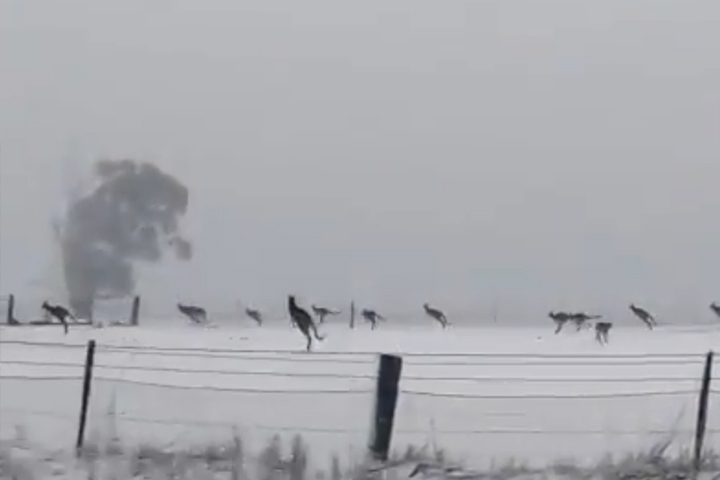Plan an Exciting Winter Vacation to Experience Snow In Australia with Loved Ones
Plan an Exciting Winter Vacation to Experience Snow In Australia with Loved Ones
Blog Article
Discover the Fascinating Results of Snow in Australia on Regional Ecological Communities
In spite of its credibility for sun-soaked landscapes, Australia also flaunts areas blanketed by snow-- a phenomenon that profoundly influences the country's one-of-a-kind environments. The insulating buildings of snowflakes shield flora and fauna amidst the chilliest winters months, while the melting snow supports rivers and water life. The real marvel lies in exactly how these icy conditions shape the nation's biodiversity and nutrient cycles. As we untangle this elaborate partnership, we find ourselves stepping on uncharted grounds in Australia's high nation.
The Unanticipated Regions of Snowfall in Australia
Although Australia is commonly connected with sandy coastlines and sun-scorched landscapes, certain areas remarkably experience snowfall. The high nation areas of New South Wales, Victoria, and Tasmania are especially recognized for their winter months snow. The Snowy Hills in NSW, for example, receive abundant seasonal snow, supplying a stark comparison to the country's normal warm, arid climate. On the other hand, the Victorian Alps and parts of Tasmania likewise see yearly snowfalls, changing the landscape into a winter season wonderland. These areas are not just anomalies however important parts of Australia's varied environment system. The visibility of snow in these regions substantially influences neighborhood ecological communities, ultimately influencing the nation's special biodiversity. However, the specific influence on Australia's distinct vegetation will certainly be talked about in the next area.

Exactly How Snow Impacts Australia's Unique Flora
These plants have actually advanced to make it through in extreme problems, with snow offering as a safety blanket from severe winds and freezing temperature levels. The snow also adds to the moisture material of the soil, supplying necessary hydration for plant life during the completely dry summertime months. In significance, the snow influences the timing of flowering and seed dispersal, the growth rates, and the survival of lots of plant types, showcasing the elaborate interaction between environment and plants in Australia.

The Adjustments of Australian Animal to Snowfall
Equally as Australia's flora has adapted to the wintery problems, the local fauna also, display remarkable adaptations to the snowfall. Variety like the Mountain Pygmy-possum, the only Australian marsupial recognized to hibernate, have actually progressed strategies to make it through in snowy environments. It makes use of the snow review as insulation, hibernating in rock gaps underneath the snow to stay cozy. In a similar way, the Snow Skink, a types of reptile, transforms its colour to white during wintertime, offering camouflage against killers. Birds such as the Snowy Mountains' Crimson Rosella Visit Website additionally adjust their diet plans to eat readily available food resources during colder periods. Thus, regardless of the rough conditions, Australian fauna shows a resilient and flexible nature, guaranteeing their survival in regions experiencing snowfall.
The Role of Snow fit Local Ecosystems
In forming the regional environments, the role of snow in Australia is both multilayered and profound. Snow supplies a crucial water resource, feeding rivers and reservoirs as it thaws, hence sustaining a variety of aquatic life kinds. The presence of snow shapes the plant life patterns, animal actions, and total sustainability of Australia's one-of-a-kind communities.

The Future of Snowfall in Australia: Predictions and Ramifications

Offered the crucial function snow plays in forming local ecosystems, the future of snowfall in Australia is drawing raising attention from environmentalists and scientists. Current climate versions forecast a substantial reduction in snowfall as a result of international warming, with potentially extensive influence on regional ecological communities. Less snow could result in reduced water availability in towering regions, adversely affecting wildlife habitats and plant. It might change the timing of seasonal changes, interrupting the life cycles of lots of indigenous types. The tourist market, heavily reliant on the winter snow period, might also encounter considerable challenges. Recognizing these predictions and their effects is crucial to establish effective conservation strategies, making sure the conservation of Australia's special biodiversity and the sustainability of its economy.
Verdict
The you could try these out duty of snow in Australia's ecosystems is pivotal yet often forgotten. It serves as a protector, a nurturer, and a shaper of diverse alpine varieties, contributing to the splendor of Australia's high country. As climatic patterns continue to move, understanding the effects and potential improvements of these snow-influenced ecosystems is essential. Thus, the snow in Australia is much more than an all-natural spectacle; it's a crucial player in the nation's ecological narrative.
Despite its track record for sun-soaked landscapes, Australia additionally flaunts areas blanketed by snow-- a sensation that profoundly influences the nation's distinct ecological communities. It uses the snow as insulation, hibernating in rock crevices below the snow to stay cozy - Does It Snow In Australia.In forming the regional communities, the duty of snow in Australia is both extensive and multilayered. The presence of snow forms the vegetation patterns, pet actions, and general sustainability of Australia's special ecological communities
Offered the critical duty snow plays in shaping regional communities, the future of snowfall in Australia is attracting boosting focus from scientists and environmentalists.
Report this page